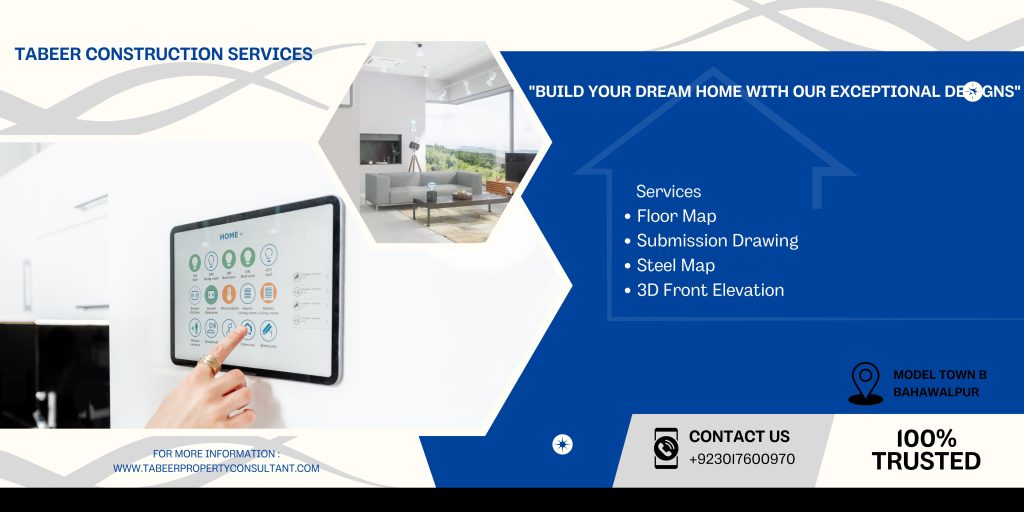If you understand the basic steps of house construction, you’ll realize that building a house is not too difficult. Here’s a simple guide to help you:
Step 1: Get a House Map
The first step is to obtain a well-planned map of your home. Consult a qualified and experienced engineer to design the layout according to your needs and budget.
Step 2: Plan the Required Materials
Once you have the map, determine the quantity of materials needed for construction. This includes essentials like bricks, cement, steel, and other supplies. Knowing the material breakdown in advance helps you estimate costs and arrange the necessary budget efficiently.
Step 3: Research Market Prices of Required Materials
After determining the materials needed for construction, the next step is to research their market prices. Visit multiple suppliers or check online sources to compare costs of essential materials like bricks, cement, steel, sand, and gravel. Prices can fluctuate based on quality, brand, and location, so gathering accurate information will help you make informed decisions.
By understanding the current market rates, you can create a more realistic budget for your house construction. This prevents unexpected financial shortfalls and ensures you are well-prepared to cover all expenses. Additionally, negotiating with suppliers or buying materials in bulk may help you save money in the long run.
Step 4: Decide Whether You Can Supervise the Construction
Before starting the construction process, you need to decide whether you can personally supervise the project or if you should hire a professional.
If you have the time, knowledge, and experience in construction, managing the project yourself can help you save costs and ensure that every detail meets your expectations. You will be responsible for coordinating workers, monitoring material usage, and maintaining quality control throughout the process. However, this requires a significant time commitment and a good understanding of construction techniques.
If you lack experience or cannot dedicate enough time, it is best to hire a reliable contractor. A professional contractor will oversee the construction process, manage labor, and ensure work is completed on schedule while maintaining quality standards. Make sure to choose a contractor with a good reputation, proper licensing, and experience in similar projects to avoid potential issue
Step 5: How to Find the Best Contractor
Finding the right contractor is crucial for a successful project. Look for someone who is honest, experienced, and reliable. A trustworthy contractor will not provide a quote blindly; instead, they will carefully review the project map, assess the site if necessary, and ask relevant questions to understand the requirements fully. This ensures accurate cost estimation and helps avoid unexpected issues during the project. Always check reviews, request references, and compare multiple contractors before making a decision.
Step 6: How to Make a Construction Agreement
Once you have selected a reliable contractor, the next crucial step is to create a clear and detailed agreement between both parties. This contract should outline essential terms, including the payment schedule, material specifications, work quality standards, project timeline, and any other important conditions. A well-defined agreement helps prevent misunderstandings, ensures accountability, and protects both you and the contractor throughout the construction process.
Lorem ipsum dolor sit amet, consectetur adipiscing elit. Ut elit tellus, luctus nec ullamcorper mattis, pulvinar dapibus leo.


